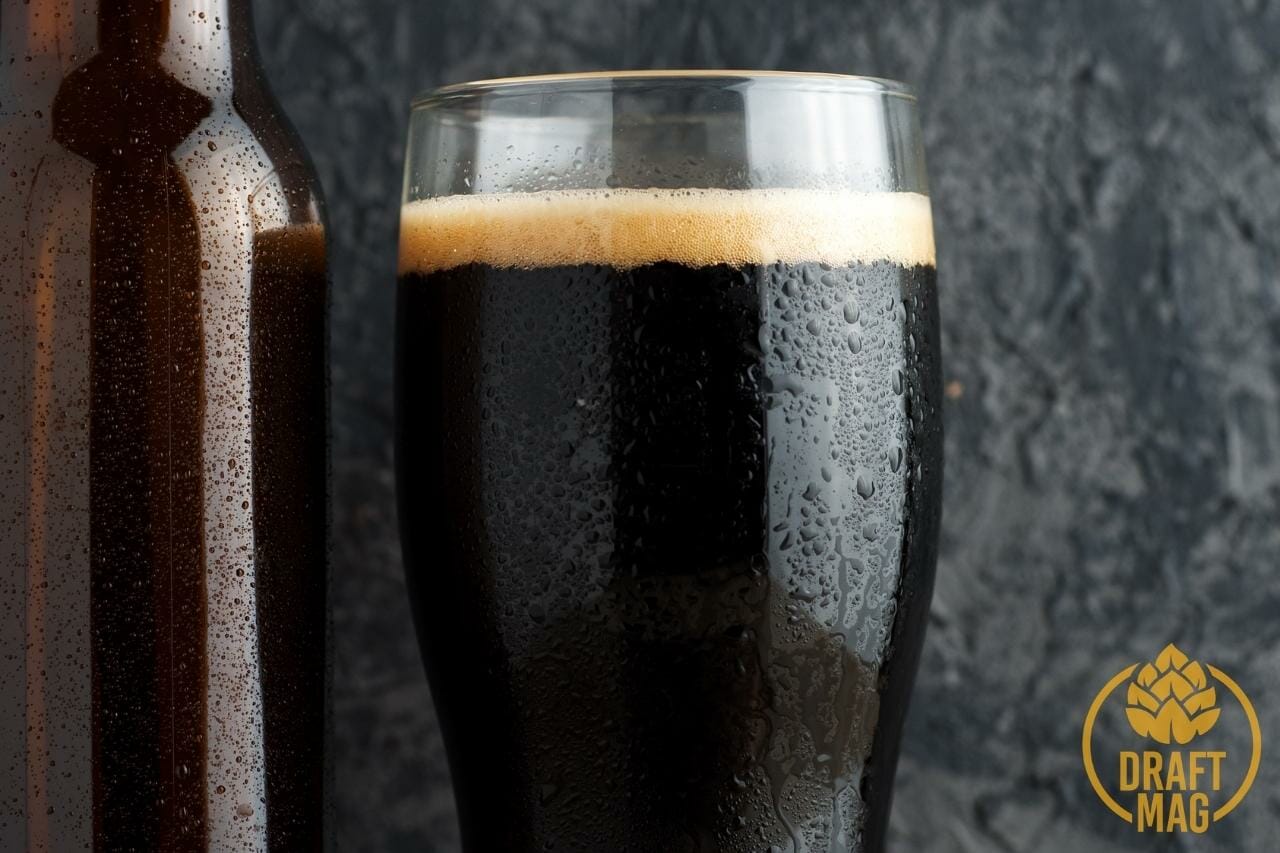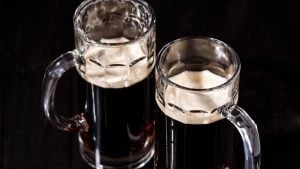Baltic Porter Recipe: Tips for Homebrewing the Perfect Beer
 The perfect Baltic Porter recipe is known to only a few people, as Baltic Porter is quite a complex beer to brew. However, it’s one of the smoothest, most delectable beers on the planet if you get it right.
The perfect Baltic Porter recipe is known to only a few people, as Baltic Porter is quite a complex beer to brew. However, it’s one of the smoothest, most delectable beers on the planet if you get it right.
Not to worry; our beer experts have created this complete and comprehensive guide so you can brew your own masterpiece at home.
Here are all the ingredients, equipment and techniques you need to brew a Baltic Porter successfully.
How To Make Baltic Porter: A Detailed Guide
If you want to try brewing a tasty baltic beer yourself, you can do so at home by following this step-by-step guide.
– Step-by-Step Guide
-
Mashing and Boiling
The first step is building a mash. This process requires infusing water with malted barley and allowing it to rest (or mash) at specific temperatures. You must use untreated, soft water and crushed roasted malts for your brew. If you don’t have access to soft water, you can treat it chemically or boil it.
Once you have your yeast, hops and malts, combine all the malts and hops to mash. You can mash at 152 F for an hour or so. Depending on the mash result, you should also consider doing a mash-out at 168-170 F for around 25 minutes.
Drain, sparge and boil your mixture for the next hour. If you plan to use lager yeast for brewing, refrigerate the boiled mixture until it gets to 48-52 F. Next, pitch the yeast and get ready for the fermentation process.
-
Primary Fermentation
The primary fermentation stage can last anywhere from three days to two weeks, depending on what type of beer you’re brewing and how active you want your yeast to be. If all goes as planned, you should see signs of activity — specifically bubbles and foamy krausen — at the surface level during that period.
The yeast tries to consume as much sugar as possible during the primary stage. When the yeast comes to a rest, it’s safe to move on to the secondary fermentation stage. At this point, you can rest easy in the fact that your wort has transformed into beer, even if it doesn’t look like much yet!
-
Secondary Fermentation
It’s time for secondary fermentation after transferring your Baltic Porter into a bottling bucket and adding priming sugar. Secondary fermentation will take 2-3 weeks. It allows your beer some time to mature and let go of any excess carbon dioxide created during primary fermentation.
During secondary fermentation, you’ll want to keep your beer at about 65 F for optimal flavor. If you are located in an area where temperatures drop below 60 F during the winter months, it might be best to transfer your beer into a warm garage or basement.
During the secondary fermentation stage, the yeast works slowly and thoroughly. Also, note that bottle conditioning can result in sediment settling on top of your finished Baltic Porter. If yours has settled out excessively with yeast after two weeks have passed, don’t worry, it should still taste great!
-
Rounding Up
Half-fill with water after fermenting the beer, then refrigerate overnight with an airlock on a complete stopper. Let it sit for at least 18 hours until it’s done bubbling.
Next, it’s time for racking with an airlock. Rack again when beer falls below krausen by at least one or two inches. Rack again, if necessary, once more before bottling/kegging (two weeks from adding dry yeast).
Before bottling, use 3 oz corn sugar for priming. Condition in bottles or keg for four weeks, chill to 45 F, and serve. If done correctly, Baltic Porters should have an ABV range of 7 percent to 10 percent and an IBU range of 30 – 40. The beer should also finish dry with hints of hop spiciness.
– Baltic Porter Recipe: Complete Ingredients List
To brew a five-gallon batch of this dark and full-bodied style of beer, here’s a list of what you will need:
- Caramel malts
- Black or brown malts
- 3.2 lb. black patent malts
- 6 oz. chocolate malts
- 1 lb. roasted barley
- 0.5 oz. Kent Goldings hops (boiling)
- 2 tsp of Irish moss
- 3 grams Liquid yeast or ⅓ pack of dry yeast
- Priming sugar
– Choosing Your Ingredients
In a typical Baltic Porter, malts are primarily caramel and chocolate. Most brewers often use a grain bill of 50/50 or 60/40 base malt and specialty malt (or 20 percent aromatic). When selecting grains, it’s important to remember that lower-color malts contribute less color than higher-color ones, which means you can use more without endangering your recipe’s color rating.
When you’re not using chocolate malt, add 6 to 8 percent of black patent or roasted barley for color instead. If you desire a darker beer, you can add up to 10 percent chocolate malt. However, you must add with caution as adding too much will dry out flavors significantly.
You’ll have to fight the impulse to over-bitter this brew when it comes to adding hops. Increasing the IBU won’t work here since you’re attempting to make a smooth-feeling and long-lasting Lager. Anything higher than 30 to 35 IBUs risks undercutting that effort.
– List of Equipment Needed: Get These Things Ready
The types of equipment needed in the brewing of Baltic Porters are very similar to that of any other dark beer. Before you begin, it’s essential to choose a large cooking pot or container. Also, choose three fermenting vessels: one for your main batch of beer, one for a smaller portion of yeast and hops that will be added later (known as dry hopping), and another to store and serve your finished product.
 You will also need an airlock to keep oxygen in while letting carbon dioxide escape during fermentation.
You will also need an airlock to keep oxygen in while letting carbon dioxide escape during fermentation.
Finally, if you plan on bottling your beer instead of kegging it, pick up some bottles, caps, and a capper — you’ll need these items when you make your final blend before serving.
– The Best Yeast To Use for Fermentation
The best Baltic Porter yeast to use is bottom-fermenting strains. There are many options for yeast, but not all will produce a characteristically malty beer. Two types of lager yeast work well: bottom-fermenting strains like Pilsner and lager strains that ferment at warm temperatures.
In addition, you can use top-fermenting ale yeasts since these beers have similar flavors. For example, English ale yeast can add slight notes to balance those extensive malt notes. A Belgian witbier strain with good temperature tolerance works well because it leaves behind light spicy notes from specialty grains often used in Baltic porters (coriander, cumin seed).
Whatever strain you choose should emphasize its character above any extra esters it might introduce into your beer.
Other Helpful Information
– Are There Recipe Variations for Baltic Porter Beers?
Yes, aside from following the typical recipe guide outlined above, you can spice up your homebrew by making a few variations to the traditional-style recipe such as experimenting with ingredients and using high-quality water. One of the best things about this type of beer is creating your unique version. You can brew the beer to fit your preferences and the season you’re drinking it in.
-
Experiment With Ingredients
Experimenting with ingredients is definitely one of the most fulfilling things about brewing. Adding other ingredients to your base malt and hops will give your porter a whole new flavor.
These ingredients make for some exciting results: dark chocolate (for chocolate flavors), cardamom (for spiciness), vanilla bean, or cinnamon (to add a level of sweetness). Each type you add has its strengths, so be creative and see what works best for you.
-
Try Using Adjunct Ingredients
You can also make your Baltic Porter different by using some adjunct ingredients. Adjunct is a term that refers to any non-malt grain used in brewing. Try using various adjuncts to see which ones complement your recipe most effectively.
-
Mind the Water Source: It Matters
Lastly, don’t forget about your water chemistry. Water makes up almost 90 percent of beer and dramatically affects its taste. If your water is soft and doesn’t have many dissolved minerals in it, you can supplement it with gypsum and calcium chloride. Nevertheless, be sure to monitor your specific mineral requirements while brewing.
– Do Baltic Porters Age Well?
Yes, but while Baltic Porters do age well, don’t expect significant changes in flavor over time. These brews typically age at cellar temperatures (around 55 degrees Fahrenheit) for about two years. That’s plenty of time for their flavors to mellow and meld. In other words, think of them as a snapshot of how they taste right now; there won’t be any massive transformation after an additional year or two in a bottle.
FAQ
What’s the difference between Porter and Baltic porter?
Porter is a general beer style while Baltic porter is a specific sub-style originating from the Baltic region.
How long does it take to condition a Baltic porter?
Baltic porters can take several months to condition due to their high alcohol content and complex flavors.
Which flavors are in Baltic Porter?
Baltic porters often have notes of dark fruit, chocolate, coffee, and roasted malts.
Conclusion
 This article gives you the best of available Baltic Porter recipes so you can make yours without hassle. Here’s the list of the essential brewing tips for Baltic Porter beer that we covered.
This article gives you the best of available Baltic Porter recipes so you can make yours without hassle. Here’s the list of the essential brewing tips for Baltic Porter beer that we covered.
- Baltic Porter ingredients primarily consist of malts and hops.
- The beer undergoes a primary and secondary brewing process.
- You can experiment with your Baltic Porter to create unique and distinct tastes.
- Bottom-fermenting strains are best for brewing Baltic Porter beer.
- You can keg or bottle your Baltic Porter for storage purposes.
Porters are dark, roasty beers perfect for cold days and nights, and the baltic style porter combines the richness of porters with the roasted character of stouts, making these beers taste even more chocolatey and delicious. Even as a beginner, you shouldn’t find it difficult to brew this beer carefully by following our guidelines.






